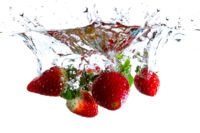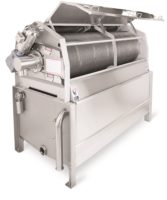Wastewater management is both a challenge and opportunity for food and beverage companies. One challenge is that many of today’s wastewater tends to be high strength with high loading of organic content. As a result, producers can face costly surcharges if discharging to a municipal sewer.
However, on the water supply side, the economic risk far exceeds the actual cost of water, leading food and beverage companies to tap reliable sources of reclaimed wastewater.
Dairy industry turns to on-site water treatment
Rising utility sewer charges stemming from tightening nutrient limits for industrial waste streams encourage dairy processing facilities to install on-site wastewater treatment. Increasingly stringent total maximum daily load (TMDL) limits are forcing municipal wastewater treatment plants to upgrade their systems and pass along these upgrade costs to high-volume customers discharging high-strength effluent. Increasing sewer surcharges on dairy processers makes the on-site treatment of high-strength waste streams more economical, thereby compelling adoption of advanced wastewater treatment systems.
Off-the-shelf biological systems have traditionally been the dairy industry’s go-to solutions, but customized systems are growing, as re-use and advanced wastewater treatment technologies gain traction. Large-scale and diversified water equipment suppliers are able to supply a range of treatment options, from off-the-shelf biological systems to advanced treatment systems for reuse.
In contrast to other food and beverage sectors, many dairy systems are complex enough to require a level of customized engineering work, creating opportunities for engineering and construction firms.
Wastewater solutions for high volumes of produced wastewater
In addition to on-site water treatment, heavy water users with high organic loads are ripe for energy capture and water re-use opportunities. Breweries and wineries, for example, have been successfully managing their wastewater. And, their strategies can be applied to other food and beverage processors, including in the refrigerated and frozen food segment, who have high organic loads.
Water and wastewater represent as much as 30% of craft brewers’ costs, thereby making on-site treatment and re-use an attractive option for cost improvements. The traditional means of managing wastewater is to truck it to a centralized municipal treatment plant and pay a volumetric charge for the service. Two innovative ways companies are dealing with this:
- Utilizing new technologies that can capture the energy in wastewater with high organic loads. The systems process high-strength wastewater flows while generating heat and electricity for on-site re-use.
- Providing outsourced, on-site wastewater treatment operations via a third-party operator by signing water and electricity purchase agreements. This eliminates the ownership, operations, maintenance and financial risks to clients during the length of the contract.
Other food and beverage sector operators are increasingly looking at third-party operators for wastewater systems, tapping into outsider expertise to managing increasingly complex water management systems.
Food and beverage industry overview
The biggest challenge to bringing new wastewater management technologies to the food and beverage sector is the fragmented nature of the industry. There are currently over 30,000 food and beverage processing facilities throughout the United States.
While the scale of the wastewater management problem lends itself to a major market opportunity for wastewater solutions providers, system suppliers must identify key partners in the industry to develop a sustainable business case. Relationships with top food and beverage players, whether in the dairy or other market sub-segments can help water players establish substantial positions in the food and beverage market. In addition, assuming some of the financial and operational risks for a system can encourage the adoption of new, innovative technologies in the space.




